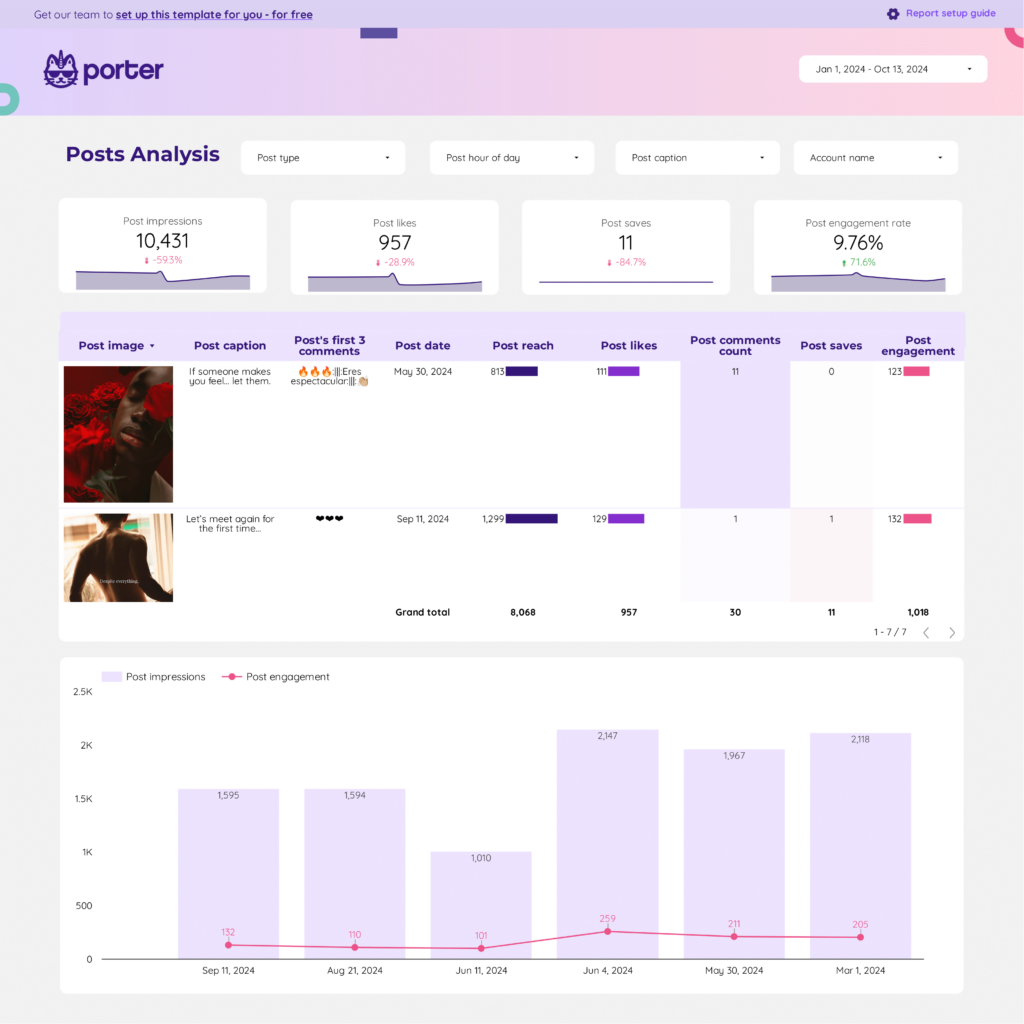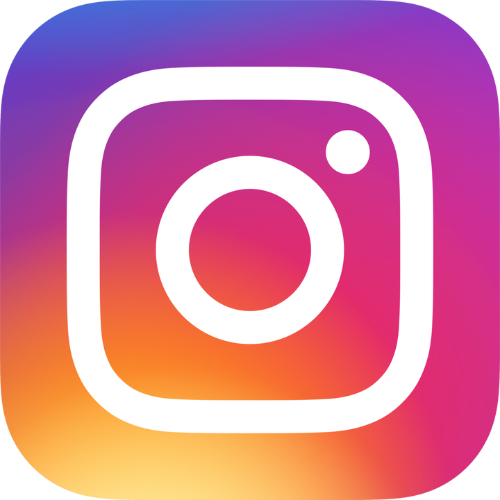A Instagram Insights KPIs report should include metrics such as Conversion metrics like Website Clicks, Profile Visits, Email Contacts; Engagement metrics like Likes, Comments, Shares; and Visibility metrics like Impressions, Reach, Follower Growth.
Then, segment and filter this data by dimensions like Campaign name, campaign objective, ad spend, Country, City, Age Range, and by time dimensions such as by hour, day, week, month, quarter, or year.
Once the data is ready, make sure to add buttons and filters to make your reports interactive, use custom colors and logos to make it white-label, and share via link, PDF, or email so your teams or clients can access it.
To analyze Instagram Insights KPIs data, follow these steps:
1) Define your use case: Determine if the analysis is for a client presentation, performance monitoring, or an ad hoc analysis.
2) Define your metrics: Choose relevant metrics such as visibility (impressions, reach, follower growth), engagement (likes, comments, shares, saves), and conversion (click-through rates, website visits).
3) Add context: Compare these metrics over time, against set objectives, or in relation to costs (efficiency metrics) and initial inputs (effectiveness metrics). For example, analyze how engagement rates have changed over the past quarter and compare them to industry benchmarks.
4) Segment your data: Break down the data by channel (e.g., Instagram Stories vs. Instagram Feed), objective (e.g., brand awareness vs. sales), campaign (e.g., seasonal promotions), product, and time (e.g., monthly or quarterly). For instance, evaluate the performance of a summer campaign aimed at increasing brand awareness through Instagram Stories from June to August.
To build an Instagram Insights KPIs dashboard, start by connecting your Instagram Insights data to platforms like Google Sheets or Google Looker Studio. Then, choose metrics such as Website Clicks, Profile Visits, Email Contacts, Likes, Comments, Shares, Impressions, Reach, and Follower Growth to fully map your funnel. Segment and break down your data by channel, campaign, audience, product, or objective, with dimensions such as Campaign Name, Campaign Objective, Ad Spend, Country, City, and Age Range. The combination of these metrics and segmentation will help you spot trends and identify areas for optimization. Share your dashboard via PDF, scheduled emails, or links for easy access.
An Instagram Insights KPIs dashboard is a tool that visualizes key performance indicators from Instagram to help track and analyze metrics such as Website Clicks, Profile Visits, Likes, Comments, Shares, Impressions, Reach, and Follower Growth. By connecting Instagram Insights data to platforms like Google Sheets or Looker Studio, you can segment and break down data by various dimensions like campaign, audience, and location. This helps identify trends and optimize strategies. The dashboard can be shared via PDF, email, or links for easy access.
Yes, Looker Studio allows you to download your report as a PDF. To do it, follow these steps:
Before downloading your report choose the date range you want to visualize on your report.
Click on the “File” menu at the top left corner of the screen.
Select “Download as” from the drop-down menu and choose “PDF.”
You can choose which pages you want to download, and also you can add a password to protect the report and add a link back to the online report.
Click on “Download” to save the report on your device.


 Instagram Insights
Instagram Insights Impressions
Impressions